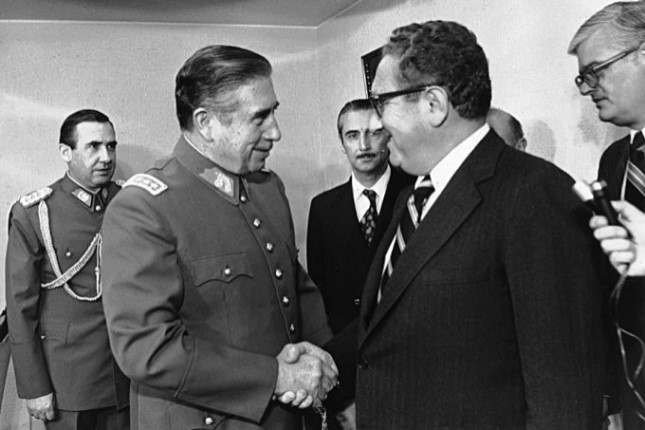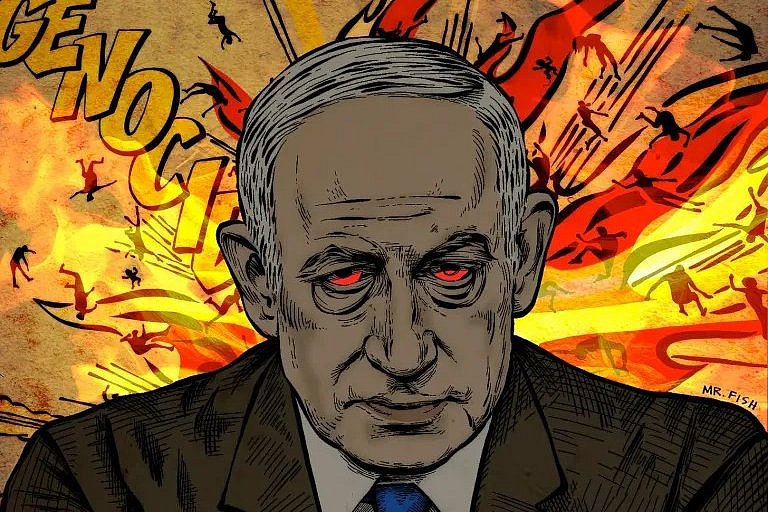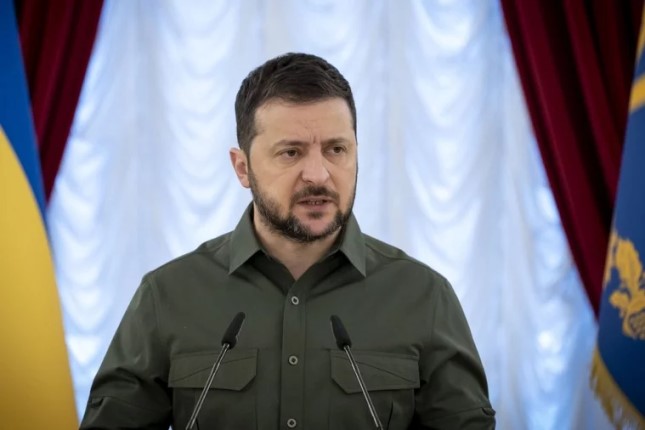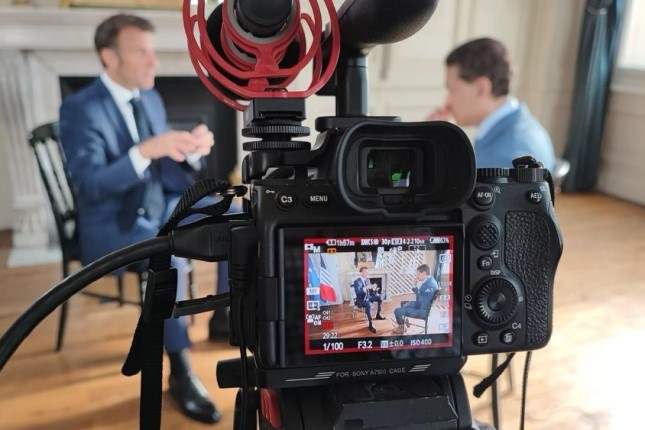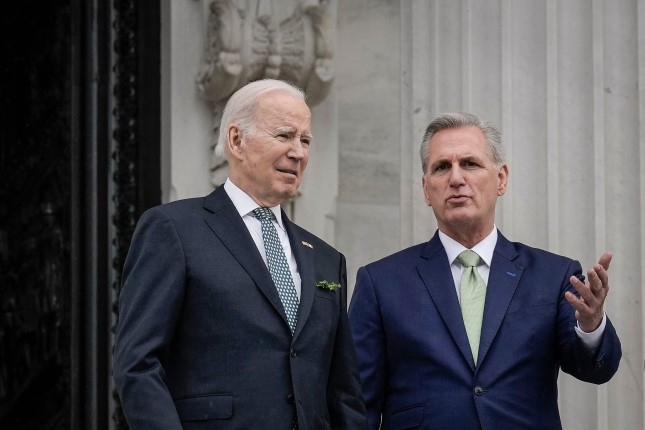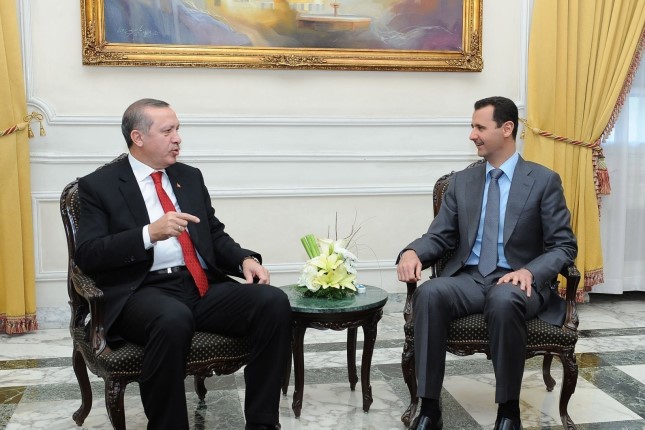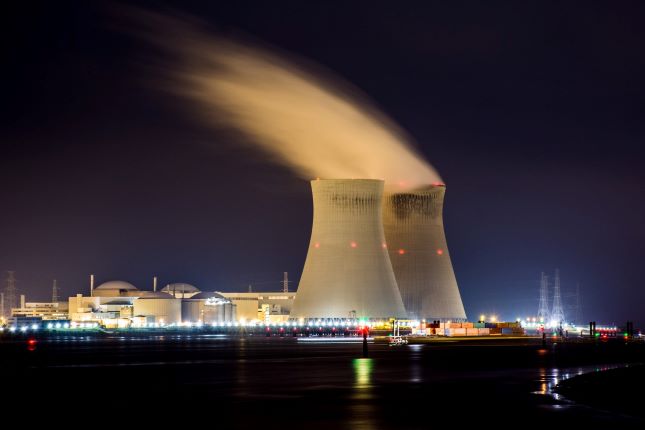For the few remaining women of Calama in Chile’s Atacama desert, September 11 holds a terrifying meaning. They understand the pain of watching forensic investigators meticulously scour through particles of dust, seeking to retrieve the tiniest fragments of lives brutally taken from the world. They know what it means to face devastating absence, knowing the bodies of loved ones will never be returned.
But their loss has nothing to do with the attack on New York’s twin towers.
Fifty years ago, in the early morning of Sept. 11 1973, a U.S.-backed coup led by General Augusto Pinochet began with Chile’s military taking control of strategic locations in the capital city Santiago, including the main radio and television networks. At 8.30am, a declaration was broadcast that the military was now in control of the country.
While the elected president, Salvador Allende, refused to concede power in what turned out to be his farewell address, Pinochet’s undemocratic forces surrounded the presidential palace. A few hours later, the centre of Chilean democracy was bombed by a fighter jet and set ablaze. Allende died from gunshot wounds the same day.
Chile under Pinochet would become the experimenting ground for an economic project that inspired both Ronald Reagan and Margaret Thatcher and went by the name of neoliberalism. But it was also an experimenting laboratory for the torture and enforced disappearance of human beings.
During the 16 years of Pinochet’s reign, 1,100 people were officially registered as “forcibly disappeared”. Only 104 bodies were ever found, although local communities put this figure much higher. Some were abducted due to their political associations and beliefs, others for sexual abuse. And some were just randomly selected to send the message that nobody was immune to the threat of vanishment.
Since 2017, I have co-directed the State of Disappearance project, which researches and promotes better understanding of this form of violence that haunts many societies when they seek a transition to peace.
The 50th anniversary of Chile’s day of terror is a key date in the annals of human suffering, in part because Pinochet’s rise to power marked the start of the modern era of disappearance as a political and organised crime technique.
Brad Evans discusses the State of Disappearance project with co-director Chantal Meza.
Techniques Honed in the U.S.
The strategy of disappearance is so shocking and difficult to comprehend because the violence is rationalised, professionalised and calculated. It is never random, even if its targets appear to have been arbitrarily selected. Its currency is emotional fear that infects the population like a virus, creating a climate of suspicion and betrayal.
While the modern era of state-led policies of disappearance developed through the countries of South and Central America, the techniques were honed at the School of the Americas (now renamed the Western Hemisphere Institute for Security Cooperation), a U.S. Defense Department training facility at Fort Benning in Columbus, Georgia.
For 21 years, South American countries were subject to a covert campaign of political repression and state terrorism coordinated by the C.I.A. and characterised by frequent coups and assassinations. During the darker chapters of this Operation Condor, policies of violence against the U.S.’s ideological leftwing enemies spread throughout the continent’s southern cone like wildfire.
Military generals and officers from Argentina, Chile, Uruguay, Paraguay, Bolivia and later Brazil all trained at the infamous U.S. facility, learning the most effective strategies to destroy opposition and govern their people by instilling a culture of everyday fear.
Some estimates put the number of enforced disappearances directly linked to this operation at around 80,000, including a staggering 30,000 bodies taken from the streets of Argentina. While these included known activists and prominent spokespersons demanding social justice and reform, others who only had a very tentative opposition to the military junta and its neoliberal aspirations were among the victims.
The story of Operation Condor (Al Jazeera English)
Indeed, the terms “disappeared” and “disappearance” first entered the political lexicon during Argentina’s dictatorship of the mid-1970s, when the state – backed by the U.S. in its so-called “dirty war” – kidnapped and killed those it perceived to be a threat to its operations and ideological foundations, literally disappearing their bodies.
Beyond the official remit of Condor, the same ideologically driven violence extended throughout the Americas, leaving no country untouched. In Colombia, the government’s victims’ unit has registered more than 45,000 victims dating back to the 1970s, although another government database puts the number of missing above 110,000. While, as in Argentina, many victims were disappeared by the Colombian state and associated right-wing paramilitary organisations, this was compounded by use of similar tactics by leftist guerrilla organisations and narcotrafficking cartels.
Operation Condor was thus at the heart of a wider security project through which the violence of disappearance became a normalised practice. While not part of the official programme, more Colombian military officials trained at the School of the Americas than any other nation.
In many cases, the disappeared would vanish without any witnesses to their abduction. People were swiftly taken from the streets and thrown into cars – in Argentina, Ford Falcons became a symbol of terror – or stolen from their beds in the solitude of the night.
Often, this would be followed by blanket denials, even that a person had actually disappeared, by those in power. But as events in Colombia and (more recently) Mexico have shown, there is sometimes a need to return a mutilated body to “remind” people of the likely horror.
In the infamous case of 43 student teachers who went missing in the Mexican state of Guerrero in 2017, the brutally tortured body of another student teacher, Julio César Mondragón Fontes, was discovered the next day. The whereabouts of his fellow students are still unknown.
As I have written elsewhere, what especially marks out this violence is the way the fight for truth and memorialisation for the missing has become a key battleground. Yet even leftist leaders such as Andres Manuel Lopez Obrador, Mexico’s president since 2018, show limits to what the state is willing to concede, as noted by his recent exoneration of the military which, according to the victims’ families, had played an integral role in this forced abduction.
Beyond the spectacle of violence, there is a deeper reason why disappearance is so effective as a political and psychological strategy. Psychologically, it plays into the most primal of human fears: to vanish without a trace. It induces what the academic Jean Franco called a “triple deprivation – of body, of mourning, of burial”.
In the act of disappearing life, not only is there a denial of justice that requires the reappearance of victims’ bodies for a crime to be proven. There is also a denial of the political process that demands negotiation with past tragedies so the future can be steered in a better direction.
This is what makes disappearance a true crime against humanity: it is a form of violence that makes it hard to restore something of the human condition. Not only does it deny a person the most basic right to belong to the world, it creates an economy of terror that lives on in the minds of relatives and friends – a form of “future violence”.
Trained in Psychological Warfare
Since the early 1990s in zones of conflict and crisis, the lines between state and non-state actors, along with regulated versus illicit economies, have become almost impossible to separate.
Organisations such as the Farc in Colombia illustrate the difficulties of distinguishing between ideological groups and mere criminal organisations. In Mexico, Los Zetas – acknowledged to be the most violent of all the world’s drug cartels – reveal an even more fraught, state-sponsored past.
This group’s origins can be dated to the early 1990s, when a group of commandos from the Cuerpo de Fuerzas Especiales (Mexican special forces) broke away from the state and used their knowledge and training to devastating effect.
Originally set up to provide a rapid security response during the 1986 World Cup held in the country, this special forces unit would soon be attacking the Zapatistas, an Indigenous movement in the southern state of Chiapas that itself became committed to non-violence.
Los Zetas’ deployment into the remote jungle regions quickly resulted in a horrifying slaughter of 30 captured Indigenous “rebels”, who were found by the side of a river with their ears and noses cut off.
Later, the same unit – a number of whom were trained in the U.S. School of the Americas – became a key element of Mexico’s war on drugs, triggering a notable acceleration in disappearances.
What made Los Zetas especially notorious was the brutality and scale of the violence, including attempted mass killings such as the grenade attacks on Independence Day in Morena in 2008, which injured more than 100. Another favoured tactic was to hang bodies from bridges and leave beheaded and dismembered bodies in discoverable locations.
That members of Los Zetas, like previous graduates from the School of the Americas, were trained in psychological warfare is not incidental. It is not enough to simply eliminate opposition. Fear works by having persons change their behaviour before they have even considered acting in a particular way. The threat of more violence stops agency and freedom dead in their tracks.
Today, this strategy appears largely immune to political change. While the U.S.-supported ousting of the democratically elected Evo Morales in Bolivia in 2019 showed it was still business as usual in the geopolitical displacement of Latin American populist leaders, in Mexico, despite a much-vaunted process of democratisation, cases of disappearance have increased exponentially.
Since 2006, the number of enforced disappearances in Mexico reported by Human Rights Watch exceeds 100,000. Over the same period, more than 4,000 unmarked graves have been discovered around the country.
A significant number of these victims are young women and people from other vulnerable groups including children and migrants. But the disappearance of nearly 150 journalists highlights the policy of silencing that goes with it. Today, Mexico is one of the most dangerous places in the world to try to report the truth.
Journalists such as Lydia Cacho and Anabel Hernandez continue to risk their lives to expose the role that corruption plays in the organisation of disappearances.
In February 2023, Mexico’s secretary of public security, Genaro García Luna – once the highest-ranking law officer in the fight against the country’s drug gangs – was convicted for being on the payroll of the Sinaloa cartel. More recently, this cartel has brought its violence to the state of Zacatecas, making it the global epicentre for disappearance, with one person vanishing every day there in 2023.
Impact of Disappearance on Loved Ones
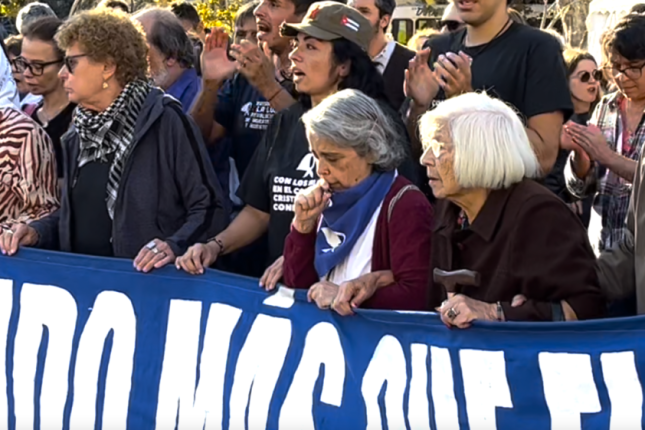
Mothers and grandmothers of the victims of the Argentine dictatorship, in Plaza de Mayo, Buenos Aires, May 2023. Photo: Joe Lauria.
Throughout history, state-sponsored disappearance has proved extremely effective in quietening resistance and governing through fear. But the organisation of disappearance takes a great deal of political and financial investment – requiring considerable organisation, planning and the provision of alibis.
It also takes significant effort to prevent bodies from being found, especially in a digital age when details of such crimes can be more easily shared.
However, digital technology also presents a significant challenge for the families searching for their loved ones, and those trying to deal with the legacies of disappearance.
While groups working on behalf of the disappeared use the internet and social media to disseminate information and maintain visibility, our interviews reveal strong suspicion of communication devices and the growing “surveillance state”. The digital revolution has given more power to those who master the technology. Disappearance has taken new forms, enabled by tracking systems such as drones that can be subsequently erased.
Despite these dangers, we monitor many courageous attempts by communities who continue to demand answers to what happened to their disappeared. In Mexico alone, there are some 130 “search collectives” tasked with trying to recover the remains of the missing. As one family member told us: “The whole country is a clandestine grave.”
According to Ceci Flores, leader of the searching mothers of Sonora in northern Mexico: “We have the idea that we know where they pick up [kidnap] our children, but we do not know where they are going to leave them. So, if we have to tour the entire Mexican republic, we are going to do it. And if I don’t find my son, maybe I will find another mother’s son.”
Theirs is a labour of care which, in the act of searching, refuses to accept the absence. But this work is laborious and financially burdening, not to mention emotionally exhausting. The collectives depend on tip-offs, though often they simply search abandoned places, disused wells, jungled forests and open fields.
There are certain clues they look for, including traces of the lime that is frequently used to cover bodies and accelerate their decomposition. Their tools are rudimentary – they often rely on the harrowing insertion of a thin metal pole, a varilla, into the ground to release the potential stench of death.
Many testimonies from these searching collectives speak of how the decomposing remains of a person gives off its own unique odour.
Aside from the fact that those searching for the disappeared often end up being violently threatened and even disappearing themselves, the psychological impact demands a more expansive appreciation of the suffering they endure.
Our research has repeatedly found that living with disappearance can be truly unbearable, for the violence it passes on to others offers no kind of resolution and no prospect of recovery. The memory of loss places a perverse kind of guilt on the shoulders of family members.
Psychological studies of families dealing with missing persons have spoken of a “vortex of grief”. Dealing with what the International Red Cross identifies as “ambiguous loss” demands new therapeutic responses that appreciate the lasting effects of this absence.
Close relatives are often deeply traumatised and haunted by “intrusive memories”. Studies of those living in the aftermath of the Holocaust have shown how trauma can also be transmitted across generations.
Yet despite all this evidence, not enough attention is paid to the lasting psychological and social impacts on communities living with disappearance. Part of the problem is that many of these communities are desperately poor and already disenfranchised. In life they are often forgotten, so is it any wonder that in death they are denied?
The Struggle for Justice
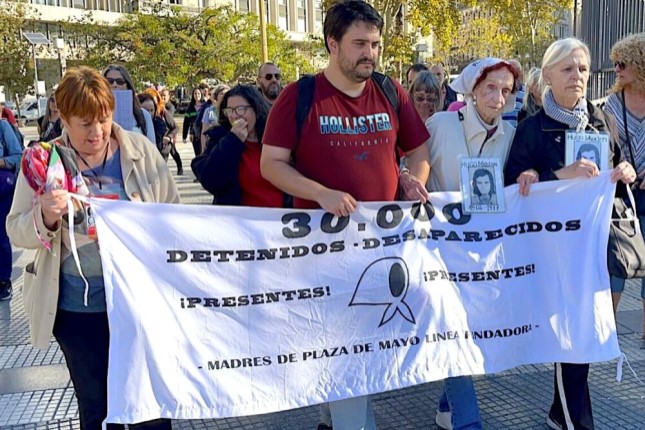
Plaza de Mayo, Buenos Aires, May 18, 2023. Photo: Joe Lauria.
Arguably, the most challenging obstacle to overcome when dealing with the crime of disappearance is the pervading culture of impunity that exists in many countries. As the U.N. Committee on Enforced Disappearance noted in Mexico in 2022, where as few as 2% of all criminal cases result in a prosecution: “Impunity in Mexico is a structural feature that favours the reproduction and cover-up of enforced disappearances. It creates threats and anxiety to the victims, those defending and promoting their rights, public servants searching for the disappeared and investigating their cases, and society as a whole.”
There are, however, notable exceptions. In Argentina, as a result of a campaign by the Mothers of the Plaza de Mayo (the first major group to organise against the 1970s military regime’s human rights violations), the International Convention for the Protection of All Persons from Enforced Disappearance was established in 2010.
Since then, some of those involved in the organisation and enactment of the country’s notorious “death flights” have been brought to justice. So has Christian von Wernich, a former chaplain in Buenos Aires who supplied details of the confessions he took to the authorities, who then used the information to target new victims.
But perhaps the most high-profile example of justice achieved was the (initial) conviction of Guatemala’s former dictator, Efraín Ríos Montt, for genocide and crimes against humanity in 2013. Montt was yet another graduate of the School of the Americas, alongside the likes of Salvadorian death squad leader Roberto D’Aubuisson and Argentine junta leader Leopoldo Galtieri.
Montt came to power following another U.S.-backed coup in 1982, and would oversee the disappearance of an estimated 40,000 Guatemalans, largely from the nation’s Indigenous Maya population. Roddy Brett from the University of Bristol was a director of the team that prepared the legal investigation against Guatemala’s former dictator. Commenting on his conviction, Brett explains: “Montt’s imprisonment in 2013 was the first time a domestic court of law in Latin America had convicted a former head of state for genocide. Through their successful search for justice, Indigenous survivors of Guatemala’s genocide obliterated the military’s wall of denial and wrote themselves into history. However, opposition to the verdict and its subsequent reversal ten days later was a major, if not unexpected, set-back for those seeking legal recourse for the disappeared.”
Power of Art to Represent Loss
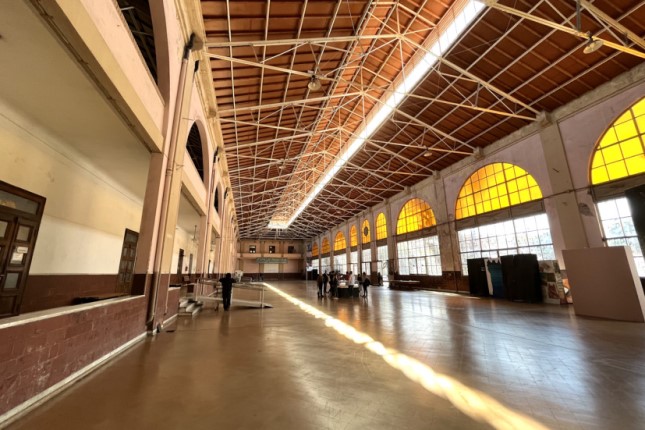
Hall at ESMA in Buenos Aires where Navy officers assembled. Detainees were brought to the basement of this building where they were tortured. Photo: Joe Lauria.
In June 2023, Argentina repatriated a plane from the U.S. that had been used in the campaign of death flights, in which victims were thrown from the air while still conscious. The extent of this strategy was only properly understood when bodies started washing up on the shores of the Rio de la Plata in December 1977 as a result of a freak weather pattern.
The repatriated plane will soon go on display at the former navy and mechanics school in Buenos Aires (now the ESMA Museum and Site of Memory), a clandestine detention facility in which many of the disappeared were held before their disposal.
The re-emergence of such items, which also includes a fleet of Ford Falcons used by the death squads, highlights the importance of material objects that give at least some visible form to the violence of absence. In the same way, it is understandable why we see so many families and campaigners harnessing the power of art to represent their loss.
There can be no peace at a macro level if individuals and communities remain traumatised by wounds that cannot heal because of a gaping absence. Josefina Echavarria Alvarez, director of the Peace Accords Matrix at the University of Notre Dame in Indiana, offered this perspective in relation to the work of the Colombia Truth Commission: “What I have seen in my work as peace educator over decades in various post-war contexts has been the importance of art-based responses … Arts-based practices are central – not peripheral – to peace building, to rebuilding relationships after war and changing the dynamics of human interaction, especially with those who have been historically separated from us.”
Art reveals better than anything the spirit of freedom. It is no coincidence that the Nazis put the so-called “degenerate artists” on trial, nor that the Pinochet regime disappeared the musician Víctor Jara, whose tortured and bullet-ridden body was discovered days after his abduction.
Jara’s creative sensibility marked him as a prime enemy of the Chilean state. There is nothing an authoritarian personality despises more than free expression and creation, for it is the essence of resistance. Moreover, through art, difficult conversations become possible. A door is opened that may allow something of the human to be recovered.
Trailer for Patricio Guzmán’s Nostalgia for the Light.
Notable here is Chilean film director Patricio Guzmán’s documentary Nostalgia for the Light (2010), which brings us back to the barren emptiness of the Atacama plains and the women of Calama. What begins as an astronomical mediation on the telescoping search of distant galaxies and stars, slowly turns the lens on to the uninhabitable desert and the appearance of distant figures: the women still searching amongst the dust for the remains for their husbands.
Decades of searching mean they can easily tell the difference between white stones and human fragments. Theirs is a story of defiance in a place where rains have refused to fall for more than a millennia. But it is also a story revealing the chasm of power that reaches across time. “I wish telescopes didn’t just look at the sky, but could go through the earth to be able to locate [the bodies],” one of the women laments as she goes through the impossible motions of another day.
The first stage of our State of Disappearance project culminates with an exhibition by the Mexican abstract artist Chantal Meza. Our project, which she co-directs, began as a result of the artistic demand to respond to the horrors of enforced disappearance in Meza’s country, and has since instigated a series of international collaborations.
Bringing together many respected academics, dancers, musicians and advocacy groups, the challenge we all confronted was largely the same: what can art, politics and society do when the body of the human is denied? The project doesn’t claim to resolve this, nor has it sought to impose any political doctrine, but tries to open up new conversations on what disappearance means, the forms it takes, and how to better imagine our response.
Meza confronts these questions in 75 works that explore themes of obscurity, mental anguish, ghosting, the fragmentation of life, and the voiding of existence. The heart of this work, she explains, is making visible what has been forgotten so that we might rethink what humanity means: “Disappearance constitutes a form of violence that rips open a wound in time. It weaponises the visual, as the terror it induces becomes prey to what is no longer seen. Part of the demand for justice, then, has to concern memory. This means to humbly consider the role of visual testimony, which the arts can help with. As artists, we can only venture to wonder the meaning of disappearance – whether in brushstrokes, dancing movements, musical compositions or the written word. But our lost worlds and the limits of our straight answers can be fiercely poured into those creations. Maybe through our encounters with artists and other collaborations, we find it easier to appear and disappear – to be never found, but just to leave a trace.”
Main photo: Pinochet, left, greeting Kissinger in 1976 © Ministerio de Relaciones Exteriores de Chile / CC BY 2.0 / via Wikimedia Commons.
Source: Consortium News.
